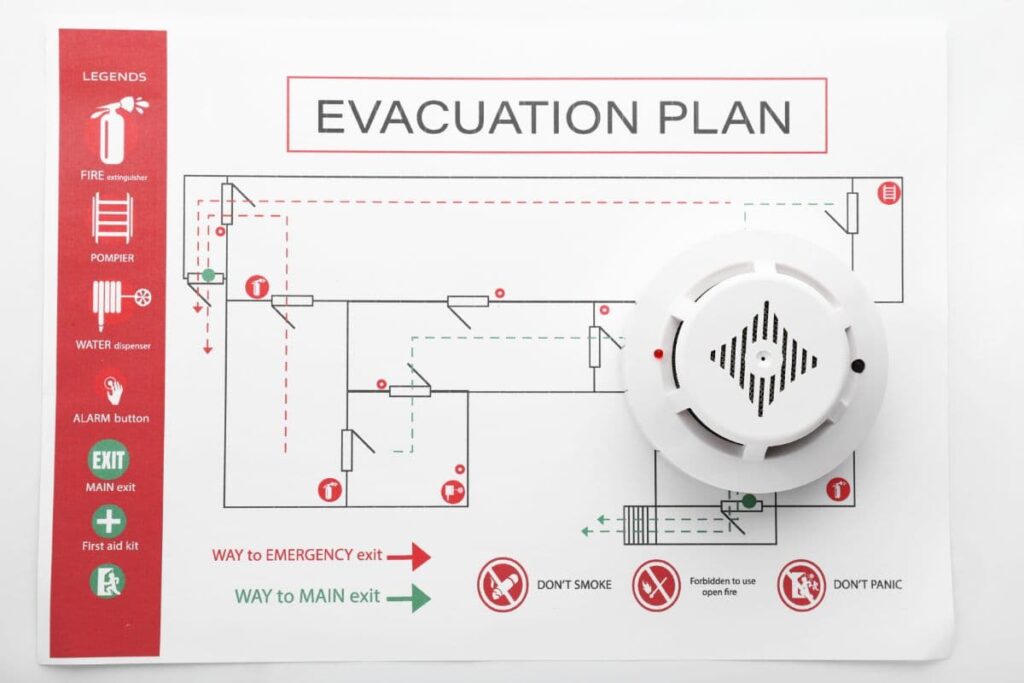Introduction: Why Changing Strata Body Corporate Managers Matters
For many bodies corporate, changing strata body corporate managers isn’t just a procedural task; it’s a turning point for the entire building community. In New Zealand, more than 200,000 dwellings are now under unit title management (MBIE, 2024), and the performance of your strata body corporate manager directly impacts your property’s value, compliance, and liveability.
When communication slows, compliance lapses, or financial transparency falters, it may be time to reassess your management partnership. At Hallmark & Stone, one of Wellington’s leading Body Corporate and Facilities Management specialists, we’ve guided dozens of committees through seamless, compliant strata body corporate transitions.
This expert guide explains how to recognise when a change is needed, the steps to switch successfully, and how to ensure the new manager delivers long-term confidence and value.
Table of Contents
1. Why Bodies Corporate Decide to Change Strata Body Corporate Managers

Switching strata body corporate managers is never taken lightly, but timely action can protect residents, owners, and the collective asset’s long-term value.
According to Strata Community Association (SCA) NZ insights, most changes stem from persistent service or compliance failures that impact owner satisfaction. Common reasons include:
- Breakdown in Communication: When managers fail to respond promptly or don’t keep owners informed, it undermines trust and creates unnecessary tension.
- Compliance Lapses: Missing Building Warrant of Fitness (BWOF) renewals, outdated insurance records, or non-compliance with the Unit Titles Act 2010 can put the entire building at legal risk.
- Financial Irregularities: Incomplete reporting, vague billing, or late levy collection signal poor governance practices.
- Deferred Maintenance: Neglected repairs or the absence of a long-term asset plan can escalate costs over time.
- High Staff Turnover: Frequent changes in management personnel often indicate deeper structural issues within the company.
- Committee Fatigue: Repeated frustrations and unresolved disputes are common triggers for committees to seek change.
At Hallmark & Stone, our first step is always diagnostic; we assess whether performance issues stem from individual management failings or systemic gaps in governance, communication, or process design.
2. Recognising the Warning Signs Early

How do you know when things have gone from inconvenient to unacceptable? Here are key indicators that your current strata body corporate management relationship is breaking down:
- Unanswered emails or phone calls for weeks at a time.
- Late or incomplete financial reports.
- Breaches in legal obligations, such as unrenewed fire compliance certificates or BWOFs.
- Hidden fees or sudden increases in costs without explanation.
- Missed meetings, poor follow-up, or reluctance to support committee decisions.
- Negative owner feedback about maintenance quality or response times.
Modern bodies corporate don’t wait for a crisis; they log issues, set KPIs, and track performance quarterly. If your manager consistently fails to meet expectations, it’s time to start planning the transition.
“In one Wellington complex prior to Hallmark & Stone taking over, repeated delays in facilities management requests prompted owners to conduct an independent audit, a classic early warning sign,” says Hallmark & Stone’s Director. “Within three months of transition, we restored full compliance and had all facilities-related items actioned and improved response times significantly.”
3. How to Switch Strata Body Corporate Managers in New Zealand: A Step-by-Step Guide

Changing strata body corporate managers involves several legal, administrative, and communication steps. Here’s Hallmark & Stone’s proven approach, aligned with SCA NZ best practices and the Unit Titles Act 2010.
Step 1: Review Your Current Agreement
Check your management contract for termination clauses, notice periods, and exit procedures.
Most NZ agreements require formal written notice (typically one to three months). Ensure your committee reviews all contractual obligations before initiating any discussions.
Step 2: Gain Committee Consensus
Document key issues and present them in a committee meeting.
To proceed, pass a committee or general meeting resolution—often requiring a simple or special majority depending on your constitution or rules.
Step 3: Consult Owners and Build Support
Transparent communication is essential. Inform owners via email, meetings, or newsletters about the reasons for change and expected benefits. This step prevents misinformation and ensures alignment.
Step 4: Shortlist and Vet New Strata Body Corporate Managers
Request detailed proposals from several management firms. Evaluate based on:
- Experience with comparable developments
- Compliance and audit readiness
- Communication systems and digital accessibility
- Fee transparency and reporting standards
Hallmark & Stone provides a Transition Readiness Report – a side-by-side assessment of prospective managers to help committees make evidence-based decisions.
Step 5: Hold a General Meeting and Vote
Provide formal notice of a motion to appoint the new manager. Pass the resolution according to your and record the decision in the minutes.
Step 6: Notify the Outgoing Manager
Serve notice in writing as per contract terms. Keep correspondence professional and documented.
A respectful, structured process ensures the outgoing manager cooperates fully during handover.
Step 7: Manage the Handover
Appoint a transition liaison or working group. Ensure the complete transfer of:
- Financial records and bank authorities
- Insurance documents and contracts
- Maintenance schedules and supplier details
- Access systems, keys, and digital files
Hallmark & Stone uses a digital transition checklist to confirm that every document, record, and compliance certificate is securely received.
Step 8: Monitor the Transition
For the first 60–90 days, maintain close oversight. Request updates from both outgoing and incoming managers to ensure nothing is missed.
4. Common Mistakes to Avoid During Transition
Many transitions fail not because of intent, but because of poor planning. Avoid these pitfalls:
- Ignoring Contract Clauses: Terminate properly to avoid disputes.
- Incomplete Record Transfer: Missing insurance or maintenance data can create serious risks.
- Poor Owner Communication: Transparency builds trust – notify owners early and often.
- Selecting on Price Alone: Cheap management often costs more in compliance and maintenance delays.
- Skipping the Exit Review: Use the change as an opportunity to audit governance and reporting systems.
Hallmark & Stone provides a post-transition performance review, helping committees benchmark progress and refine governance practices for the long term.
5. The Hallmark & Stone Difference: Transition Management Done Right
What sets Hallmark & Stone apart is our integrated, compliance-first approach to body corporate and facilities management.
- Local Expertise: With decades of experience managing Wellington’s most complex strata body corporate developments, we understand the local contractors, compliance standards, and environmental challenges unique to the region.
- Integrated Services: Unlike many management companies, H&S combines Body Corporate Administration with Facilities Maintenance, providing a single point of accountability and reducing duplication.
- Compliance Leadership: Our proactive audit systems ensure continuous alignment with the Unit Titles Act, Health and Safety at Work Act, and BWOF obligations.
- Transparent Communication: Every committee receives quarterly performance dashboards and real-time access to maintenance and financial records.
- Transition Specialists: Our structured onboarding framework has delivered smooth handovers for developments ranging from boutique apartment blocks to multi-stage complexes.
“Our clients come to us after years of reactive service,” says the H&S Management Team. “They stay because we deliver transparency, professionalism, and measurable improvement.”
6. Frequently Asked Questions
Who decides which new strata body corporate manager to hire?
The body corporate committee, representing owners, reviews proposals and recommends a preferred provider. Final approval usually occurs via majority vote at a general meeting.
Do we need to provide a reason for changing managers?
Not necessarily. Most contracts allow for “no-fault” termination with written notice. However, documenting your rationale supports good governance and transparency.
When can we change strata body corporate managers?
Anytime, provided notice and termination conditions are met. Many committees choose to align changes with their AGM for administrative ease.
How long does it take to complete a transition?
Typically 4-6 weeks, depending on contract terms and the responsiveness of the outgoing manager.
What documents must be handed over?
All financial records, insurance certificates, BWOF documentation, contractor details, and meeting minutes should be securely transferred to ensure uninterrupted compliance.
Conclusion: Switch with Confidence
Changing your strata body corporate manager is about more than fixing short-term frustrations; it’s about securing your building’s long-term success. With the right preparation, transparent communication, and expert guidance, a transition can restore confidence, clarity, and compliance.
At Hallmark & Stone, we make the process seamless, combining body corporate management expertise, facilities oversight, and a commitment to owner satisfaction.
Explore our Body Corporate Management and Facilities Management services or contact our Wellington team for a confidential transition consultation.
Further Reading
- What Is Strata Management and How Does It Work?
- Strata Community Association (NZ)
- Unit Titles Act 2010 (NZ Legislation)
- MBIE: Guidance for Bodies Corporate
- Strata management
- Body corporate
- Property management
- Strata title
